- You are here:
- Home »
- Author's archive:
All posts by Bike Master
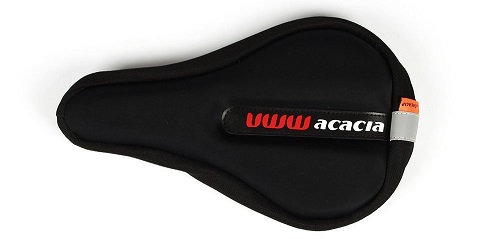
Bike Seat Cushion Options that We Love
Bike seat cushions might be overlooked when it comes to choosing the best bike, but it won’t be too many minutes before riders realize how important a good bicycle seat is, especially if you’re planning long rides. Not to mention bike saddles and the seat post that feels OK to begin with can gradually turn into a rock after a few hours of riding in Lycra bike shorts over long distances. Most avid bikers have at least one story about cutting a long ride short because their backside dictated it was necessary.
So, what should you be considering when it comes to upgrading your bicycle seat?
Everyone is different and is going to have different preferences, but if you consider some of the following factors, you’ll be able to narrow down your choices.
Construction
The materials made to construct bike saddles not only affect how durable it is, it also affects the comfort for distance riders. One negative aspect is that adding cushion material for superior comfort will add weight and must be taken into consideration if that is a factor. There’s a lot to consider when it comes to bicycle saddle construction with added cushion, but it’s best to start here:
- Look for a four-way stretch microfiber that doesn’t bunch or need readjusting while you’re reading
- Offers moisture wicking and is breathable, which keeps you dry during long rides
- Antibacterial, which keeps your seat disinfected and will prevent unpleasant complications
- Memory foam or gel cushion that molds to your bottom
- Anti-slip capacity that prevents sliding during your ride
You’ll also want to pick a seat made of high-quality durable materials, which means paying a little more. Keep in mind, buying a cheap seat now could cost you more in the long run if you’re constantly having to replace it.
Shape
Next, you’ll want to look for a seat with a shape that suits your body. Most of the time, the best seats are anatomically shaped, as opposed to a flattened wedge shape. Better seats also feature a lot of padding and feature a high-density construction toward the back and becomes trimmer near the front.
Remember, a thick seat doesn’t automatically guarantee you’ll be comfortable. There are times when chunky seats are poorly designed and you’re better off with something with less cushioning. Ideally, your seat will combine the best of all worlds, and be well-designed ergonomically and be well cushioned.
Choosing the Best Bike Seat Cushion
Now that you have some idea of what goes into making a quality seat you can take on long rides, you can begin to look at your options. We’ve compiled a list of seats we love and hopefully, you’ll be able to find something from this list that works for you.
Zacro Gel Bike Seat

This is a gel seat made from anti-slip materials and features a drawstring that lets you secure it to your bike. It weighs just under three-quarters of a pound and works best on indoor bikes. It’s easy to install and is water-resistant, which makes it great for long, sweaty workouts. We love it for its extra soft gel support and good ergonomics.
This seat cushion retails from around $8 to $13.
Kyson 3D Soft Gel Cover
This seat cover is gel-based and made of breathable stretchy materials. It weighs half a pound and can be used on both indoor and outdoor bikes. It features anti-slip grip, dual gel pads, and an easily adjustable string. It fits most bike seats, so you don’t need to worry about getting something that needs to be returned because it doesn’t fit.

We consider this a great “compromise” option. It’s moderately priced and offers pretty much everything a rider could want, without a lot of extra bells and whistles. It’s a great option if you’re just getting into cycling or if you know what you like and want something tried and true.
This seat retails for around $11 to $13.
Fit Tek Gel Bike Seat Cushion

This cushion is best for outdoor bikes and features anti-skid materials and a soft gel padding. This seat cushion is versatile and fits most bikes. It’s easy to install and features a concave design that reduces pressure on the bottom and provides maximum comfort. It has a spacious central well and has a bit of a custom-made feel, which is surprising at this price point. Its slimmer front end allows for free legal movement without reducing comfort in any way.
This seat cushion retails from around only $4 to $6, making it a great bargain.
Domain Cycling’s Large Bicycle Gel Seat Cover

This seat offers both gel and foam, so you get maximum support. It has a non-slip underside, so you don’t need to worry about the cushion sliding out of place while you ride, even for long periods of time. It weighs one pound and can be used for indoor and outdoor bikes. We love it because it’s suitable for large bike seats and offers a great deal of support. It’s lacking in the sit bone support and padding, but overall we think it’s still a good choice.
This seat retails at the higher end at around $25 to $27.
Daway A33

This seat cushion is made from breathable silica gel and memory foam. It features anti-skid particles to prevent slipping and has an antibacterial outer layer. It weighs a little more than half a pound, so it’s one of the lighter options on our list. We love how comfortable it is and are impressed by its memory foam padding that maintains shape. It’s also easy to install, versatile, and functional. It also comes in fun colors, so you can add a little style to your ride.
This seat cushion retails for around $11 to $13.
Acacia 3D Foam Saddle Cushion

This seat cushion features high-bounce memory foam and a Lycra cover. It weighs just .02 pounds and can be used on both indoor and outdoor bikes. It features reflective stripes which makes it safe to ride outdoors at night and has a no-slide friction surface that prevents you from slipping and sliding. We love the fact that this seat is so durable with high-quality stitching and materials. It’s also available in five different colors.
This seat retails for around $10 to $12.
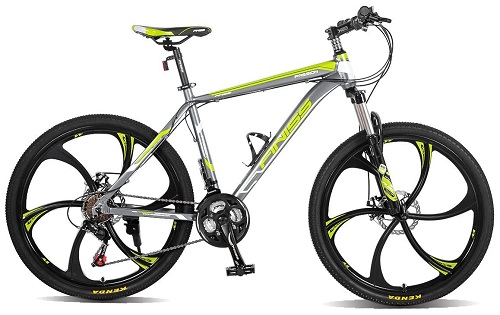
Downhill Mountain Bike Buying Guide
The first mountain bikes in the world were made by a bike enthusiast and racer named Joe Breeze. He made the first one in 1978. Now, the idea of the bike he started with has become much more specialized, with the frame, wheels, and suspension adapted to meet riders’ different goals. Breeze had a background in bike racing, and he came from Marin County, California. His first mountain bike was called the Breezer #1. This bike now lives in the Smithsonian, and the company is still in existence today, though he has since sold it.
Mountain bikes have certainly come a long way since the Breezer #1. They’re getting lighter, faster, and sturdier. People are taking advantage of technology and coming up with apps to help track your mileage, speed, and other riding stats. People are developing frames and suspension systems that Breeze may not even have dreamed of back in the 70’s. Some of the top athletes in the sport are helping companies come up with burlier and better bikes. More and more people are joining the sport, and kids are starting to mountain bike younger and younger. It’s an exciting time for biking. By joining a downhill community, you’ll be taking part in a sport that has evolved so much in a small amount of time. The people drawn to this sport are often adrenaline junkies, the kind of folks who like to go skydiving and bungee jumping. They don’t like to sit still. They’re rabid for the kind of energy that comes with zooming at high speeds down the side of a mountain on a downhill trail, or doing major jumps on a high speed cross country trail, or going off cliffs. They’re the Shane McConkey’s of the world. Downhill biking doesn’t always have to be a massive adrenalin rush, of course. You can just go for a mellow downhill ride without fearing for your life. It’s up to you. That’s what’s great about biking; the freedom you experience while doing it.
There are a few different kinds of mountain biking, and it’s good to have an idea of which ones you’d like to focus on so that you can buy a bike that will fit your specific needs. Dirt jumping, freeriding, enduro, trail riding, downhill biking, all mountain, hardtail…the list goes on. But one of our favorite styles of riding is downhill mountain biking. The adrenaline rush is unbelievable. It’s more addictive than those amazing cappuccinos with cocoa powder that your barista makes. You might have watched videos of World Cup races, or of young kids zooming off of jumps. Downhill biking is no doubt one of the coolest things you could do.
Downhill mountain biking is the sport of kings. And it doesn’t have to be incredibly expensive to get into. We’ve provided a handy guide so that you know what to look out for when you’re buying a downhill mountain bike, as these bikes can be quite different from all mountain or cross-country models. This isn’t a versatile bike. Four out of five mountain bikers would have absolutely no use for it. That’s because it’s made for fast and gnarly trails, the kind you wouldn’t take dad on. They usually have a good amount of suspension, and their breaks are of course super reactive, so you can stop or cut speed on a dime if you need to. Whether you want to use it for racing or you just want to cruise around while avoiding the annoying pedaling uphill, you have a lot of options.
You can ride this type of a bike off the tallest jumps you can find, while other bikes would defi-nitely end up wrecking and leaving you gasping on the ground. But the downside is that you won’t want to pedal them far. These bikes aren’t meant for anything but screaming downhill as fast as possible, so if you’d like to do some pedaling on your mountain bike, you might want to go for an all mountain or another type.
The most important part of any bike is its frame, and downhill bikes are of course no exception. Frames for these are often developed by World Cup racers or other high-profile, hard riding people. For the most part these generally have some carbon in them, to make them a little bit lighter. Others are still mostly aluminum, which can be a bit heavier but is also far sturdier.
One of our all-time favorite downhill bike brands is Nukeproof, and you can bet it’s true to its name. Some of the top World Cup racers, like Sam Hill, a World Series Enduro champion and Elliot Heap, use this brand, which hails from Belfast.
Other downhill bike models we like:
Diamondtrack

A consistently awesome performer, this bike is a favorite of many.
Beiou

We like this one because it’s one of the lightest bikes on the market.
Raleigh

This has an aluminum frame, and has incredible reach.
Merax

Tough, highly recommended by the pros, and with a cool rugged frame that folks love. It’s really, really fast, though some want a sleeker model.
For downhill mountain bikes, you’ll want to think about a few different factors.
The shocks. Coil springs, or the lighter air shocks? Do you know the difference between the two?
The brakes. Always an important part of downhill biking.
The wheels. For downhill tires, the traction is important. You’ll want some weight to them, and you’ll want to look for tires that are in the sweet spot in terms of size: from 2.35 to 2.5 inches. You can also decide what kind of pattern you want on the tread.
The price. Research is key to investing in a bike that fits both your budget and your needs.
The frame. The frame contributes to the overall stability of the bike, and can make a big difference in how much control you have while you’re riding down those steep hills and making those switchback turns.
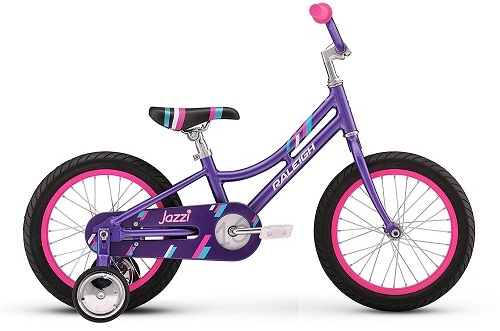
Safest Kids Mountain Bikes
Mountain biking can of course be quite a dangerous sport. Whether you’re an experienced biker or you’re brand new, young or old, really going for it during a race or just cruising around some tracks at Moab, there’s always the chance that you’ll have a fall in the wrong place, or that something will simply go wrong. We’ve known friends who’ve gotten compression fractures from casual downhill races, given themselves concussions out at Moab, and broken ribs. You get going pretty fast, and any wrong move could cause you to hit the ground. It can seem sometimes that all of your mountain biker friends are either training for races or injured. But this doesn’t mean your kids can’t get into the sport, does it? This is what makes biking so fun—the adrenaline rush. Making split-second decisions is good for the brain, and the grit and level of physical fitness it takes to get to the top of a hill can create a sense of discipline that lasts your kid for years to come. And there are ways to mitigate the risk, so that you and your children stay safe.
We’d recommend starting out with a safe children’s mountain bike. After all, your kid is going to bike somehow, whether you want him or her to or not. You may as well support them.
A lot of people want to buy a bike for their kid even though she’s growing like a weed, so they buy a big bike that the kid will grow into. This isn’t the best way to go when it comes to mountain bikes. For winter coats, maybe. But a mountain bike that’s too big makes it tough to reach the pedals and uncomfortable. Not to mention it makes the bike more dangerous for your kid to ride. Buy a good one that fits her (or his) size, and sell it once the kiddo grows out of it, or give it to the next youngest child.
Sometimes if you make a rash or unwise purchase, it works perfectly acceptably for a while and then politely breaks down. If you do a little homework, however, you’ll get much better results.
Here are a few of our favorite options for kids’ mountain bikes. These have been field tested and found up to the challenge of reliably transporting your young children up and down the peaks surrounding your home. We've kept in mind some important safety features like front suspension, rim brakes, wheel sizes, and hydration packs. Of course, the safety of the bike depends upon its rider, so we do recommend you sit down with your kids and try to at least give them a little information on the safe use of this bike, even if packs of boys and girls roaming around on two wheels will certainly undo at least some of this information. And this is great; when kids choose to bike outside of their comfort zones, they will grow as riders. A little guy trying to keep up with his older brother and his friends may get a few scraped knees, but will also get used to knowing how fast is too fast for him. He’ll become a better rider. Especially with suitable boys bikes. A nine-year-old girl following her older friends off a few of the smaller jumps at the bike park may end up with a broken arm, but she’ll also learn to assess for herself what’s within her limits and what’s not, and will be able to apply this information to future endeavors.
These options are the most stable, and they’re made specifically with kids’ bodies and measurements in mind. So without further edu, here are our favorite mountain bikes for kids.
1. Raleigh
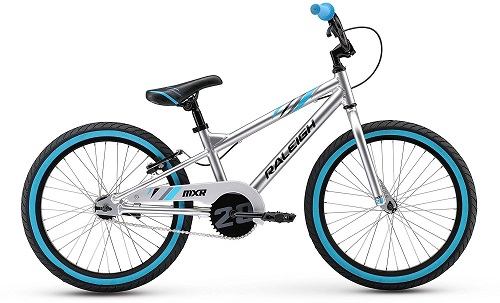
We love this brand of bikes, and think Raleigh is one of the best companies out there when it comes to crafting high-quality, durable, and affordable kids’ bikes.
2. Diamondback Bicycles Atroz Dual Suspension Mountain Bike
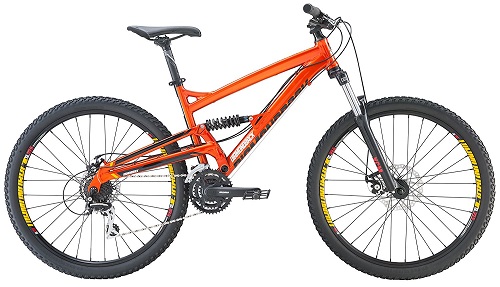
For its price, this bike is a great deal. The tires are solid, and it has 24 speeds to choose from. The frame is aluminum, and it weighs just under 45 pounds.
3. Kent Super 20 Boys Bike
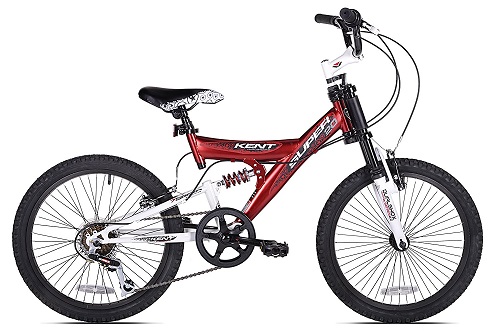
This bike has 20-inch wheels, 7 speeds, and dual suspension. It also has a convenient quick-release clamp for the seat. It’s a great choice for beginners, and it weighs a little less than the previous bike, 36 pounds.
4. Raleigh Girls Jazzi

We love Raleigh bikes; this model is a great option for the kids. Assembly is required, though they’ll do it for you for a fee. This model is great for those who want to ride hard on rocky trails. Users found that the parts were high quality and that it works great for both the more experienced and for beginners.
5. Roadmaster Granite Peak Boys Mountain Bike
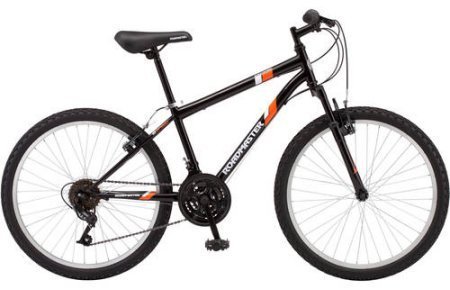
This bike is a great buy if you want something cheaper than the models we previously mentioned. Some assembly required. Users found it durable and a great option for the price, though some found the seat uncomfortable. We’d recommend purchasing a different seat and attaching it to the bike, if your child likes the bike otherwise.
We can’t emphasize enough that you should buy a bike that fits your child right now, rather than spending money on a larger bike that he or she will grow into. It’s easy enough to sell used mountain bikes once your child grows out of them. Biking will be a lot safer and more pleasant for your kids if they can reach the pedals properly, or comfortably stand at a traffic light without having to stretch their legs too much. Getting kids cycling while they're young is important. Remember how valuable the bike will be to your kids’ confidence as they get older, and how you’re teaching them to embrace a lifetime of heading outside for some exercise and fun.
Once you’ve bought the bike, sit down and talk with your children about how to bike safely, and what to pay attention to. They should be aware of the rules of the trails as well as the streets, so that they aren’t putting themselves or others in unnecessary danger. And make sure to be a good role model for them as well!
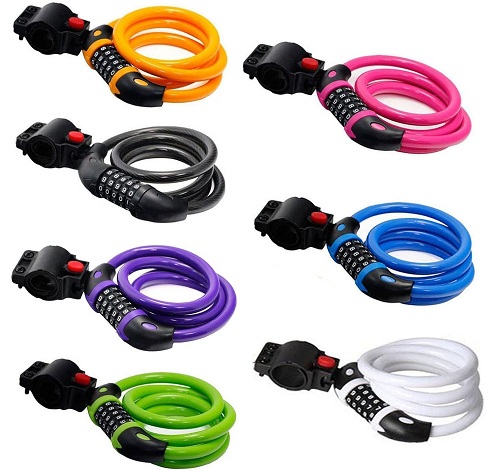
Best Bicycle Lock Reviews
One of the most critical parts of owning a bike? The bike lock, of course. That piece of metal or plastic that you affix to your bike and to a secure object around it, so no one pilfers your ride when you're leaving your bike. We’ve had bikes stolen so many different times, both locked and unlocked, but a lock is the best insurance you have against bike thefts. And some locks are eons better than others in terms of durability, ease of use, and cost effectiveness. No matter how much your bike cost, it can be an incredibly frustrating and sad experience to lose yours to theft. There’s the inconvenience of finding another one, the loss of any attachments like that bell your cousin gave you for Christmas, or that water bottle you got at a friend’s wedding, or the custom leather saddle seat. Plus, we bond with our bikes and spend so much time with them that it breaks our hearts to know someone else is now cruising on our Kona across the Brooklyn Bridge.
So, needless to say, locks are important
A few things to consider before purchasing a lock are how much muscle you’ll need (do you live in Bushwick, Brooklyn, or a retirement community in Ohio?), what you want to spend (always an important factor), whether you want any other uses out of it (lights, for instance), style, and ease of use. For some of us, remembering a four-letter word can be pretty tough. For those who are better with numbers, a padlock-style lock is impossible. Some of us can’t keep ahold of a key to save our lives, and are more likely to lock ourselves off of our bikes than a would-be thief. Some of us maybe bike safely home after a beer or two to avoid driving, and want a lock that’s simple to disengage and carry home, so that we don’t look like idiots undoing the lock. Some of us just want something light that will, as a former landlord of mine put it when he recommended I stay at home while the plumber worked, keep honest people honest.
So, with all of these factors in mind, here are a few of our favorite ways to lock up the items most precious to us in this world. These are the strongest bike locks of all the locks we tested. When properly locked, you'll have no fear of leaving your bike. Gollum would have used one of these suckers for his ring, if he had the technology we have today (if they would have fit through a ring).
There are a few different options when it comes to finding a secure lock. The U and D locks are popular, though we find them a little annoying sometimes to fit to certain stands. They don’t work well when there are already a ton of bikes on the stand, for instance. And someone with a power tool or bolt cutter will be able to cut through them. And people can pick cylindrical locks with a pen, so you might want to avoid those. Locking skewers are nuts and bolts that protect parts of your bike, which can be great for those who customize with expensive parts. Chain locks are also popular, though they can be quite heavy, and can be sliced through with a bolt cutter. Some hardened steel chains will naturally be sturdier than others. Cable locks are another option, and they come in different varieties. You can use them in combination with other locks as well. Wheel locks keep someone from taking a wheel off your bike. Now, we even have locks that you can use a smartphone to disengage, which will send you a message if someone messes with them. In the future, we predict these locks will grow in popularity, and that the “dumber” locks will eventually be phased out.
Here are a few of our favorite models when it comes to the bike lock:
Bicycle Chain Lock, Sportneer 5-Digit Resettable Combination Anti-theft Bike Locks

Top pick. This model is a keeper. We like how you don’t have to worry about losing a key to open it (it has a resettable combination, too), and we love the cloth sleeve. It’s over three feet long, and it’s made from something called manganese steel. It’s flexible, which makes it easy to thread through tires and around whatever you're locking your bike to. It weights a mere 1.5 pounds, and costs just $13 on Amazon.
AKM Bike Lock Cable 4-Feet Bike Cable Basic Self Coiling Resettable 5-Digit Combination with Complimentary Mounting Bracket

This model is a little cheaper, and like the Sportneer version, you can also reset the combination. It has a five character passcode, and it’s great for things like skateboards or lawnmowers as well. Plus, it’s tiny and easy to carry around; it weighs 410 grams. Of all the locks tested, this one was by far the most easy to transport.
Heavy Duty Combination Bike U Lock, Amazer 12mm Bike Lock Bicycle Heavy Duty Combination U Lock Bike Lock Anti Theft

For something a little more burly, we like this lock. It’s ingenious. It’s keyless and has a dust cover to protect it from dust and wear. And if you aren’t satisfied, you can always just return it. Users liked how it’s simple to enter the code in. We like the sleek look as well. It retails for $25 on Amazon.
Bike Lock GoFriend High Security 5 Digit Resettable Combination Coiling Cable Lock

This lock is great for kids. It’s light (it weighs just over half a pound), and it comes in so many different colors, from pink to white to purple. It’s 120 cm, and it has a mount as well.
And have you heard of the Skunk Lock ? It’s motto is, “the lock that fights back.” This U-lock is fine to carry around, but it sprays a mixture of chemicals if anyone tries to mess with it. Watch the videos online to see how it works; they’re good for a laugh. Their premise is that any lock out there can be cut in under 60 seconds, so you need to be more proactive in preventing the theft of your beloved bike. Prices vary, as it’s an Indiegogo campaign.
Even with the best lock out there, however, there’s no guarantee that someone won’t find a way to steal your bike. If your bike does get stolen, report it right away, and check craigslist and your local pawn shops.
